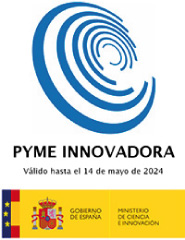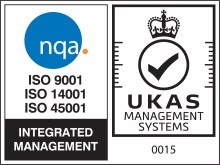
The quality standards required in the food industry are increasingly stringent. This shift is driven by the need to protect consumers, ensuring that food is both healthier and tastier. Quality control systems are essential for proper production and for meeting the minimum quality standards required for food products, making their importance in the industry immense.
What is Food Quality Control?
Food quality control refers to the process companies use to ensure that food is in good condition and tastes as it should. This control helps distinguish between food that is fit for human consumption and food that is not. To do this, the food undergoes a series of tests (technological, physical, chemical, microbiological, nutritional, and sensory) that determine its suitability.
These controls are particularly important in seafood products, where strict quality and hygiene standards are required, as well as ensuring that the cold chain is not broken to keep the product fresh and safe.
Machine Vision Systems for Food Quality Control
Automating quality control is one of the most profitable investments for industries, especially in the food sector. When combined with machine vision systems, the results of the control are optimal and highly recommended, as they increase efficiency, speed, and profitability.
Machine vision adds significant value to the quality control process. Thanks to this technology, a company can:
- Instantly determine if a product meets predefined conditions.
- Accurately measure the product’s size.
- Detect inconsistencies in color or defects in shape (both internally and on the surface).
These benefits, along with many others, provide excellent quality control that enhances your company’s productivity and efficiency. Additionally, the collection of massive amounts of data and the ability to leverage this data with other software solutions provide valuable insights into industrial processes, enabling further improvements in the process.

Economic Benefits of Incorporating a Machine Vision System in Quality Control
As mentioned earlier, integrating a machine vision system into quality control is one of the most profitable investments for a company. The return on investment (ROI) is significant, justified by several factors:
Labor Cost Reduction:
Many quality control processes rely on human inspection, requiring a certain amount of human resources. However, machine vision systems perform this task at high speeds, based on consistent criteria and in a fully automated manner.
Operational Improvements:
Considering the reduction in line downtime, bottlenecks, and maintenance costs that the implementation of a machine vision solution eliminates, it is highly cost-effective to incorporate such systems.
Quality Costs:
The costs associated with maintaining adequate quality for product sales are minimized with the incorporation of a machine vision-based quality control system.
This technology significantly reduces production waste and the costs associated with re-inspection, decreased customer satisfaction, customer complaints management, and product recalls. Machine vision ensures that only products meeting specific quality requirements reach the end customer.
At VRAIA, we have developed various quality control systems that incorporate machine vision, delivering incredible results and achieving a high level of customer satisfaction. If you are considering implementing a quality control system in your company, do not hesitate to contact us.

